How to clean your room with ADHD: Simplify & Succeed!
ADHD-Friendly Cleaning Tips for a Tidy House and Calm Mind
Ever felt like cleaning your room is a Herculean task that requires the focus of a ninja?
If you’ve got ADHD, you probably know what I’m talking about.
Cleaning isn’t just about picking up things and putting them in their places. It’s a mission that demands a series of decisions which can feel overwhelming when your mind is often in a sprint.
But here’s some good news – you’re not alone, and more importantly, there are ways to make it simpler!
In this article, we’re going to explore some practical tips on how to clean your room with ADHD, so you can have a tidy space and a calmer mind.
It might seem tough but remember, challenges are just opportunities in disguise.
So let’s dive into why cleaning can feel like climbing Mount Everest when you have ADHD and, more importantly, how we can turn that mountain into a molehill.
Cleaning with ADHD: Why is it so difficult?
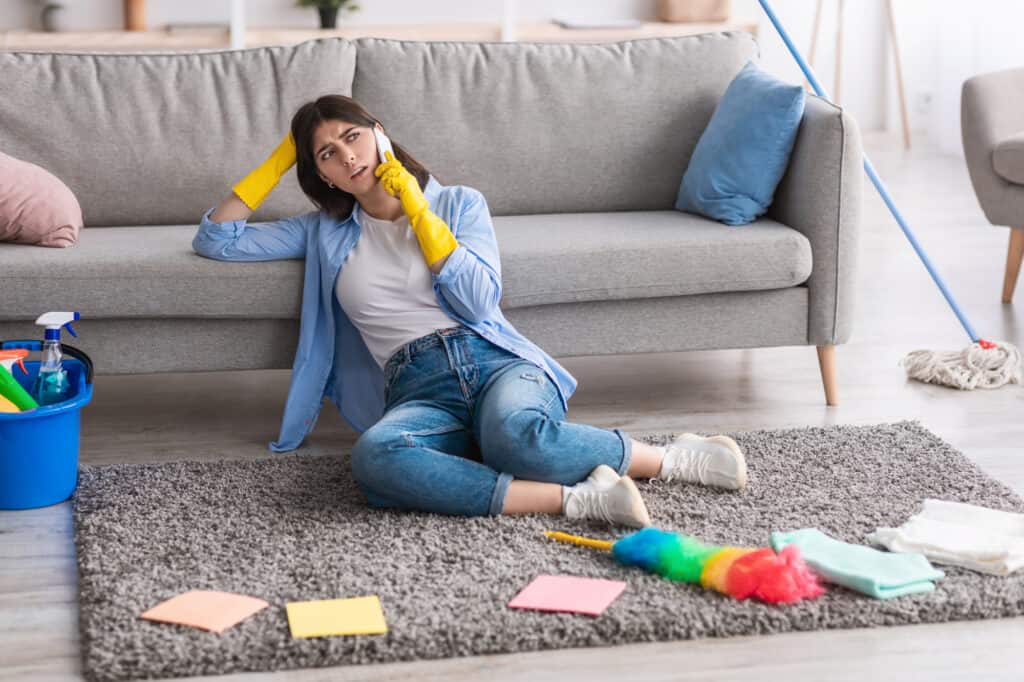
Cleaning with ADHD can be a real challenge.
You know that feeling when you start cleaning, but your mind quickly jumps to another, leaving a trail of half-done chores behind? Yep, that’s the time blindness and attention challenges at play.
Our ADHD brains are like magnets for distractions, making it tough to stay focused on cleaning. It’s like we have a radar for anything that’s not related to the task at hand—herding cats would probably be easier!
And let’s talk about the emotional rollercoaster. Cleaning can be overwhelming, frustrating, and anxiety-inducing, especially when it feels like you’re not making any progress.
On top of that, executive function deficits can make it hard to stay organized during house cleaning too. Finding the right spot for cleaning materials? That can be a real struggle.
Traditional cleaning tell you to follow strict cleaning schedules, deep clean every nook and cranny regularly, and tackle all cleaning tasks at once. But here’s the thing: those tips might work for some, but they don’t always play nice with your ADHD brain.
Why traditional cleaning advice may not work for you
Traditional cleaning advice might not be the best fit for individuals with ADHD. Our brains function differently, and we need approaches that align with our unique needs. Here’s why traditional cleaning advice may fall short:
- Overwhelming nature: Long lists of tasks and detailed instructions can trigger anxiety and confusion for those with ADHD, making it difficult to stay on top of things.
- Time management challenges: Prioritizing tasks, estimating time accurately, and transitioning between activities can be tough for individuals with ADHD. Linear progression doesn’t always align with our brain’s natural flow.
- Perfectionism focus: Traditional advice often emphasizes perfection and flawless results. However, distractions and impulsivity can hinder achieving these ideals. Instead, we need practical strategies that maintain organization without fixating on unattainable standards.
- Flexibility: People with ADHD often face challenges when trying to stick to rigid routines. Finding a cleaning approach that allows for adaptability and accommodates the ebb and flow of ADHD symptoms can be more effective.
Rather than beating yourself up for not following these rigid guidelines, it’s crucial to seek alternative approaches tailored to cleaning when you have ADHD. By doing so, you can create a cleaning schedule and routine that works harmoniously with your brain’s wiring and allows you to find relaxation amidst your ADHD challenges.
How to quickly Tame the Messy House
Divide and Conquer
Break down cleaning tasks into smaller chunks to make them more manageable. Focus on one area or room at a time instead of trying to clean the entire house at once. This approach allows you to see progress quickly and prevents feeling overwhelmed.
The Power of Quick Wins
Start with quick and easy tasks that yield immediate results. Clear off countertops, make the bed, and tidy up common areas. These small victories will boost motivation and create a sense of accomplishment.
Use the “Other Room” Box
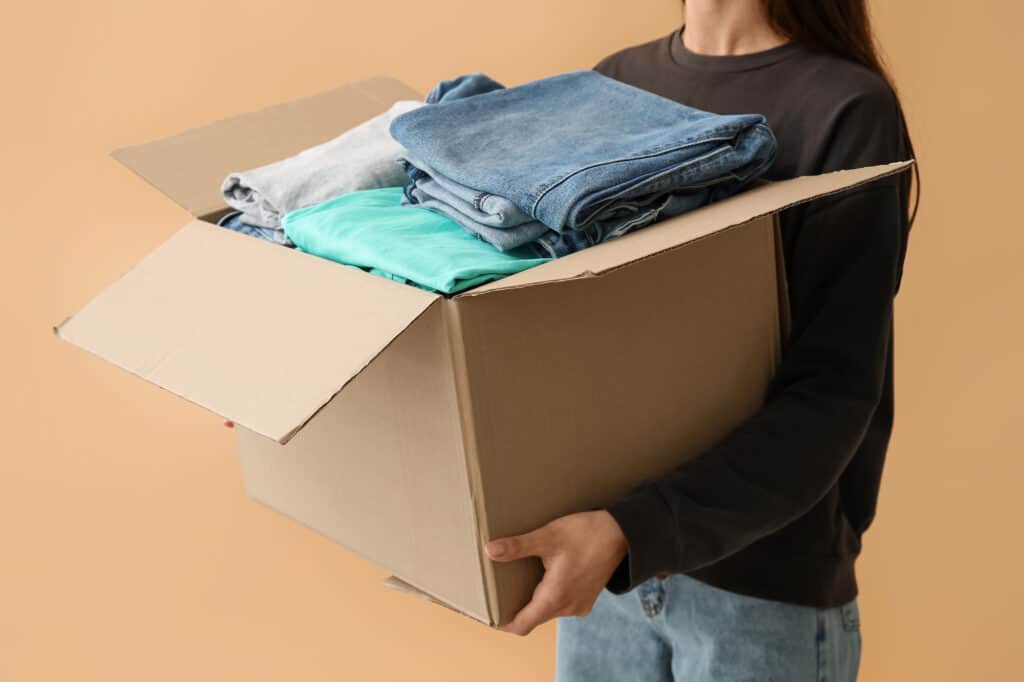
A simple and effective way to reduce distractions while cleaning is by using a designated box to temporarily hold items that belong in different rooms. This allows you to stay focused on the current cleaning task without getting sidetracked by putting things away immediately. Once you finish cleaning the room, you can then take the box and distribute all the things to their proper places, ensuring a more organized and clutter-free living space.
Use the “Five-Minute Rule”
Set a timer for five minutes and tackle a specific job within that time frame. Whether it’s decluttering a shelf or organizing a drawer, committing to just five minutes can kickstart your cleaning momentum and help you get more done in short bursts.
Creating an ADHD-Friendly House Cleaning Schedule
Creating an ADHD-friendly cleaning schedule involves breaking tasks into manageable chunks to avoid feeling overwhelmed. Here are some practical points to consider for your cleaning routine:
Daily Cleaning Tasks
Set aside a few minutes each day for quick tasks that maintain tidiness. This could include making the bed, doing a load of laundry, wiping down kitchen surfaces, and tidying up common areas.
Weekly Deep Cleaning
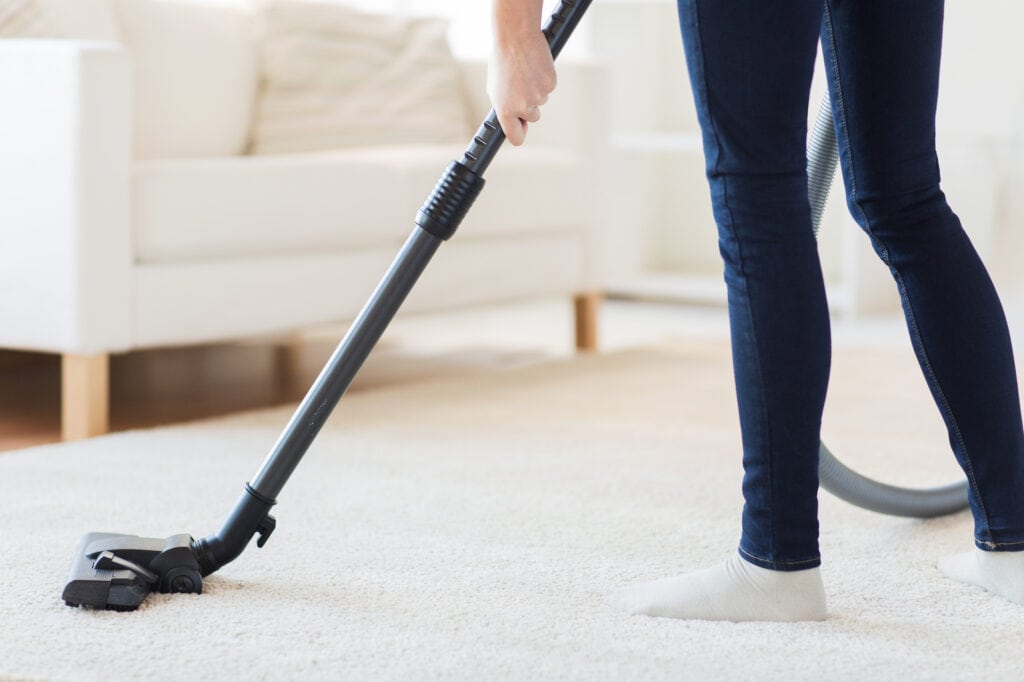
Dedicate specific days of the week to tackle deeper cleaning tasks. For example, you might decide you assign Mondays for vacuuming and dusting, Tuesdays for bathroom cleaning, Wednesdays for organizing cluttered spaces, and so on. Breaking it down by days helps you focus on one task at a time without feeling rushed.
Organizing Tips for people with ADHD
Clear the Clutter
One of the most important organizing tips for people with ADHD is to clear the clutter. When your environment is filled with unnecessary items and visual distractions, it can be easy to lose focus. Here are some strategies to help you clear the clutter:
- Start small: Begin by tackling one area or category at a time. It can be overwhelming to try to declutter your entire space in one go. Instead, break it down into smaller, more manageable tasks. For example, start with a single drawer, closet, or desk.
- Sort and categorize: As you declutter, create categories for items. Sort them into groups such as keep, donate, recycle, or throw away. This process helps you make decisions about what to keep and what to let go of. Be honest with yourself about what you truly need and use.
- Set limits: Establish boundaries for the amount of stuff you keep. Determine how much space you have available and allocate specific areas for different items. For example, designate a shelf for books or a bin for accessories. Setting limits can help prevent clutter from accumulating again in the future.
- Make it a regular practice: Clutter has a way of creeping back into our lives. To maintain an organized space, make decluttering a regular habit. Set aside a specific time each week or month to assess your belongings and eliminate any unnecessary items so you have less stuff.
The “Touch It Once” Rule
Keeping your home tidy and avoiding procrastination
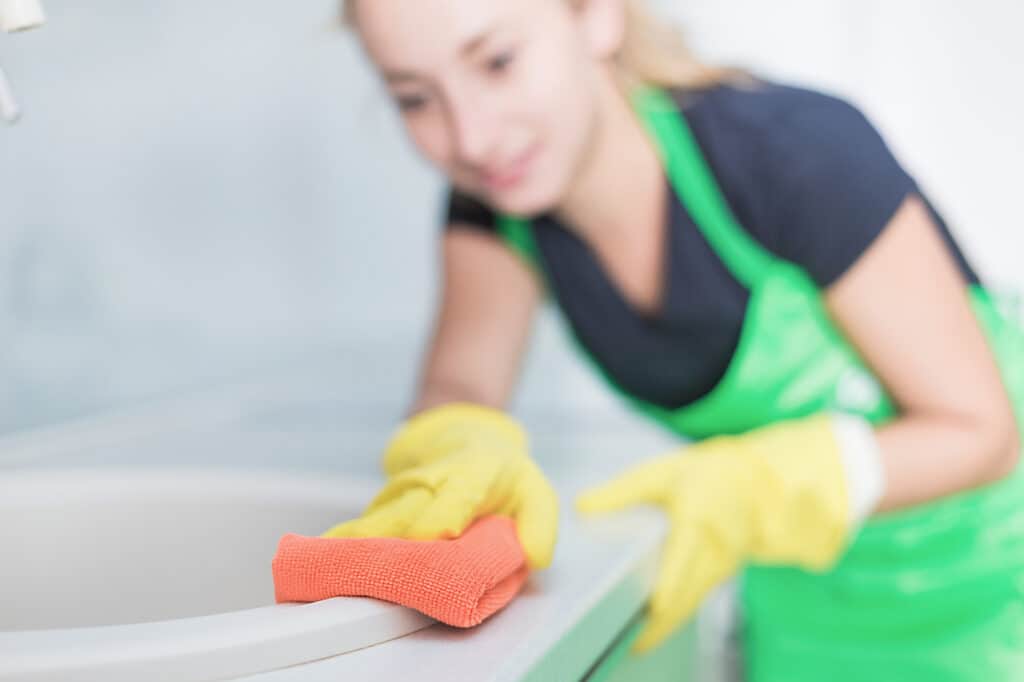
The “Touch It Once” Rule is a game-changer when it comes to keeping your home tidy and avoiding the notorious procrastination trap that many of us fall into, especially those with ADHD. This rule is all about dealing with items as soon as you come across them, rather than putting them off for later. So, if you find a dirty dish in the living room, instead of thinking “I’ll do it later,” tackle it right away.
Not only does this prevent clutter from piling up, but it also helps in training your brain to stay on top of tasks. The “Touch It Once” rule can be applied to various aspects of cleaning and organizing your space.
When you take off your clothes at the end of the day, instead of throwing them on a chair or leaving them on the floor (we’ve all been guilty of this), make it a habit to put them directly into the laundry basket or hang them back in the closet. By doing this, you eliminate unnecessary steps and avoid creating additional work for yourself down the road.
Start small by focusing on one area or task at a time until the “Touch It Once” rule becomes second nature for you. With practice and consistency, you’ll find that your home becomes tidier, and you can relax with ADHD knowing that you’ve tackled tasks head-on instead of letting them pile up.
Labeling Solutions
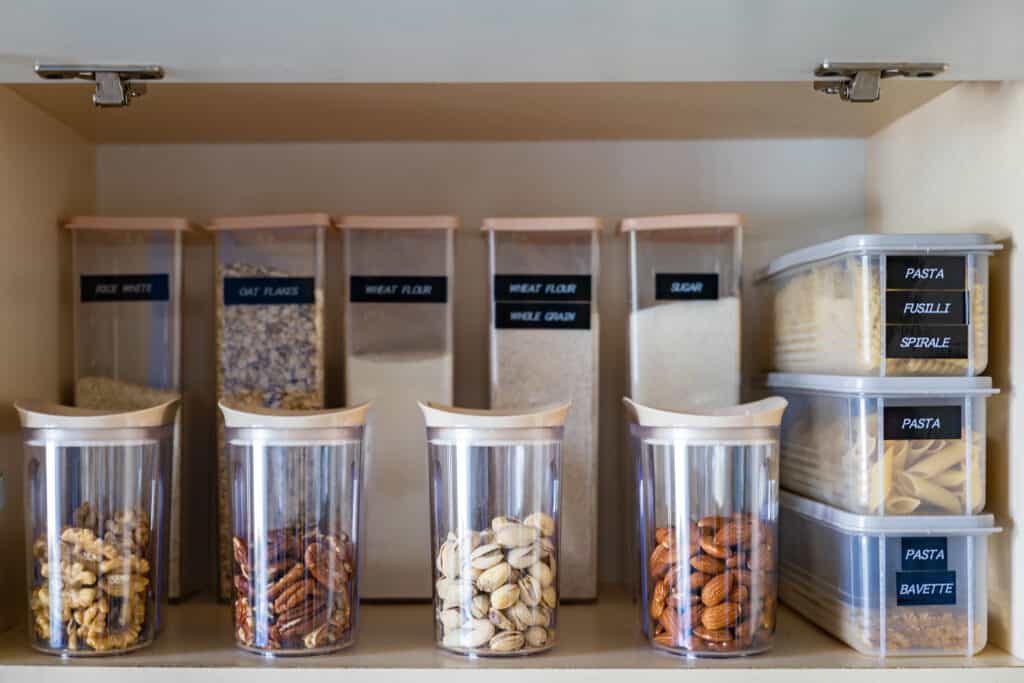
One effective way to stay organized and on top of your cleaning tasks when you have ADHD is by using labeling tools. Labels can be effective in helping you find things easily, remember where they belong, and maintain order in your space.
Start by investing in a label maker or simply use sticky notes and markers if you prefer a more budget-friendly option. When it comes to labeling, think beyond just the obvious.
Label not only the contents of storage boxes and containers but also individual drawers and shelves. For example, instead of writing “miscellaneous items” on a box, be specific and label it as “art supplies,” “electronics cables,” or “office stationery.” This will not only make it easier for you to find what you’re looking for but also encourage you to put things back where they belong.
By taking the time to label your belongings effectively, you’ll reduce clutter-related stress and create an environment that supports focus and productivity.
Sensory Stimulation Techniques to Boost Focus
When it comes to cleaning with ADHD, finding ways to boost focus is key. One effective strategy is using sensory stimulation techniques that can help engage the senses and promote better concentration. Below are some techniques you can try to improve focus:
Music
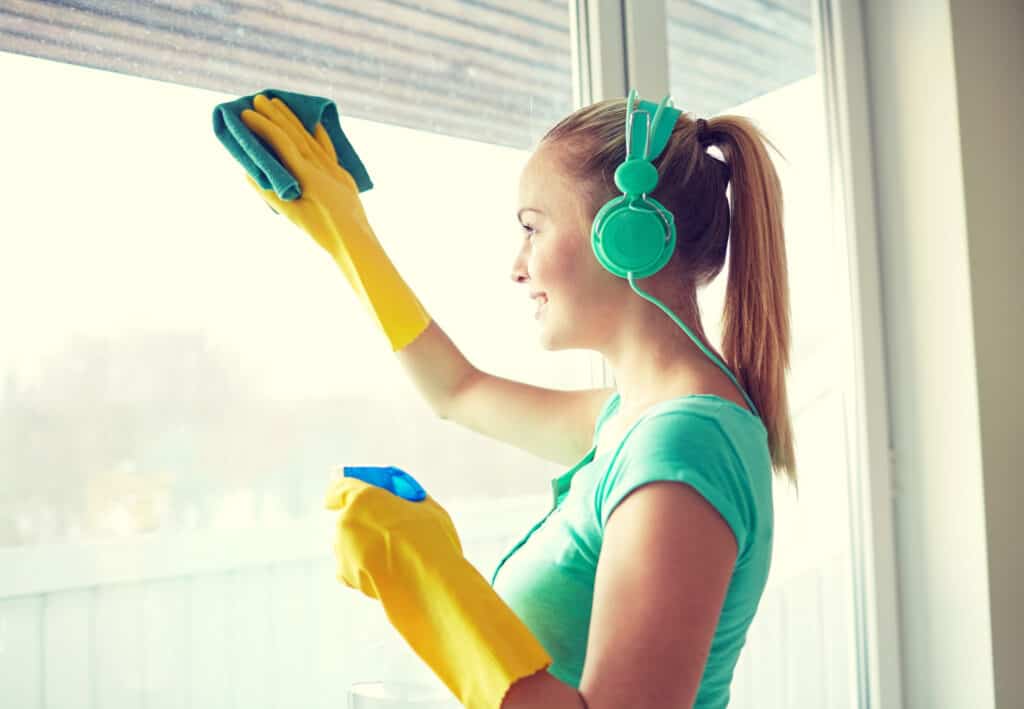
Listening to upbeat, energetic tunes can provide a sense of motivation and make the task feel more enjoyable. Create a playlist of your favorite songs or find a genre that gets you moving.
The rhythm and melodies can help stimulate your brain and keep you focused on the task at hand. Another way to enhance focus is by adjusting the lighting in your cleaning space.
You can also listen to your favorite podcast. Some podcasts are dedicated to ADHD, so you can learn more about yourself while cleaning, such as the Adulting with ADHD podcast.
Lighting
Bright, natural light can provide better visibility and create a more stimulating environment for cleaning. On the other hand, if you find bright lights overwhelming, try using softer lighting options like lamps or candles to create a calmer atmosphere while still being able to see what needs to be cleaned.
Aromatherapy
Certain scents are known to have calming effects on the mind and body, which can help counteract any restlessness or distraction caused by ADHD symptoms. Consider incorporating essential oils such as lavender or peppermint into your cleaning routine by adding them to an oil diffuser or mixing them with water in a spray bottle for a refreshing scent while tidying up.
Overcoming ADHD Challenges with Laundry and Dishes
Laundry and dishes are two household chores that can become overwhelming, especially for individuals with ADHD.
The never-ending piles of dirty laundry, clothes and dishes can seem insurmountable, leaving you feeling frustrated and discouraged. But fear not!
With a few strategies in place, you can conquer these tasks and maintain a clean and organized home.
Laundry
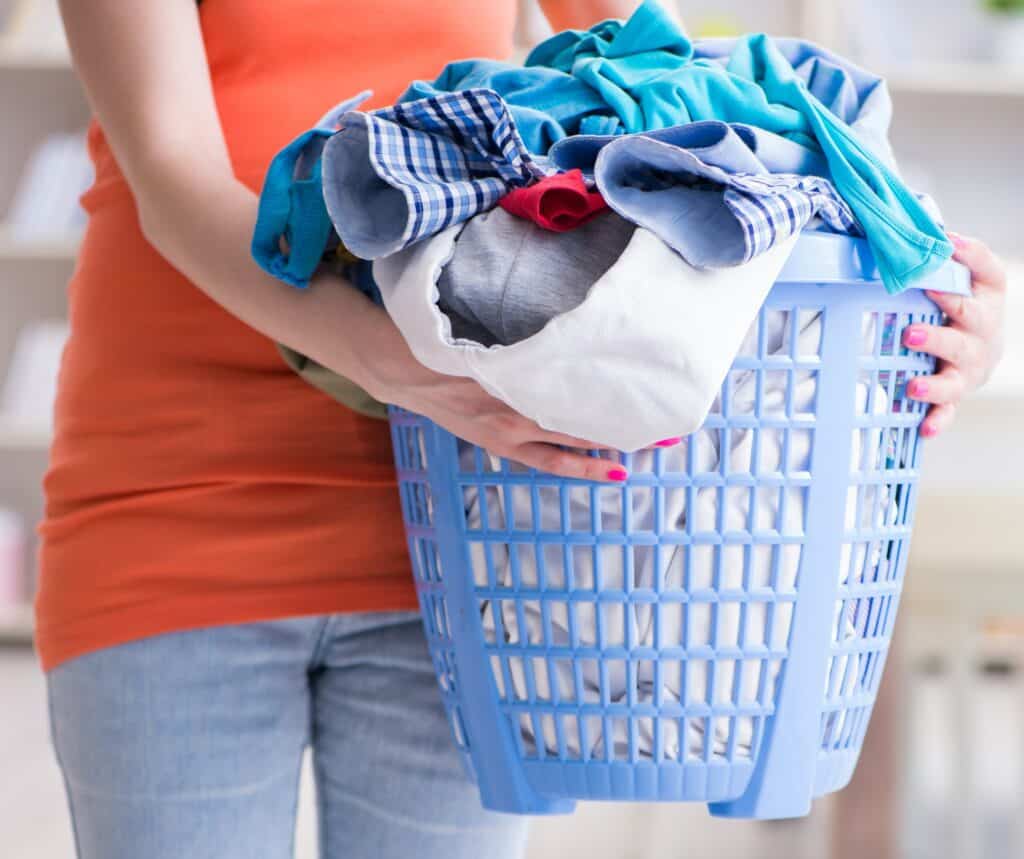
When it comes to laundry, one of the best strategies to save yourself is to implement the “Laundry Basket Strategy.” Start by placing two laundry baskets in your bedroom or designated laundry area – one for clean clothes and one for dirty clothes.
As you go about your day, toss your dirty clothes into the designated basket instead of leaving them scattered around the room. This simple act helps contain the mess while also making it easier to gather all the laundry when it’s time to do a load.
Dishes
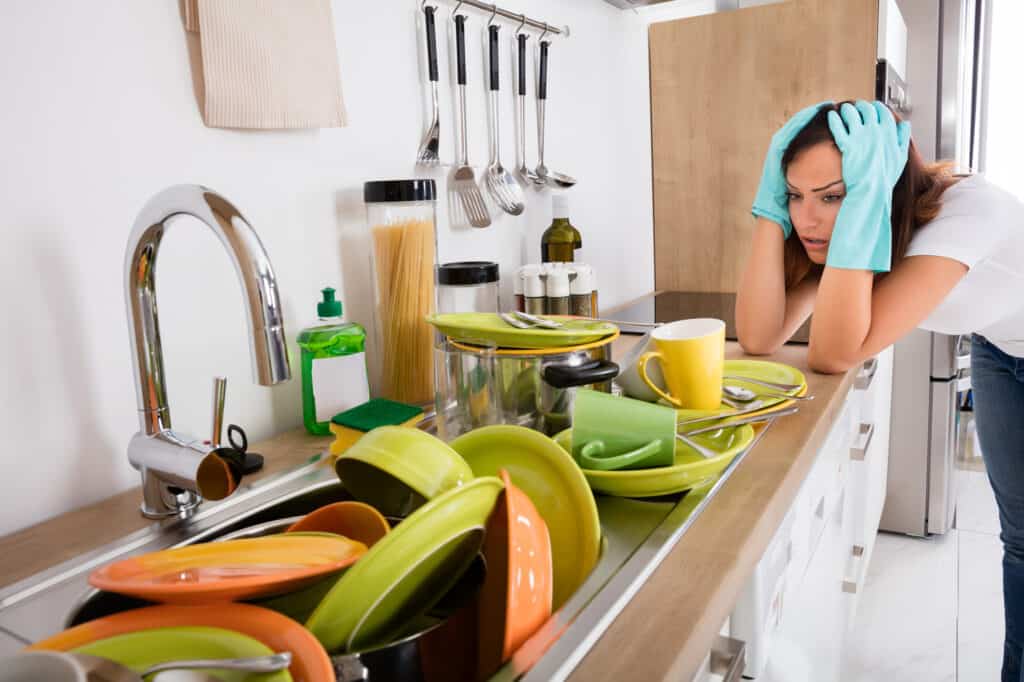
To make the task of washing dishes less daunting, try mastering the art of quick dishwashing. Instead of letting dishes pile up in the sink, develop a habit of quickly washing or rinsing them right after use.
This prevents food from drying up and sticking to the plates, making cleaning much easier later on. Additionally, breaking down dishwashing into smaller tasks can be helpful.
For example, start by tackling the silverware or glasses first before moving on to larger items like pots and pans. This way, you won’t feel overwhelmed by the sheer volume of dishes.
It’s important to remember that some days may be more challenging than others due to variations in ADHD symptoms. On those days when focusing feels particularly difficult, consider using relaxation techniques before diving into household chores.
How to Stay on Track and Finish Cleaning Tasks
How to clean your room with ADHD and stay focused
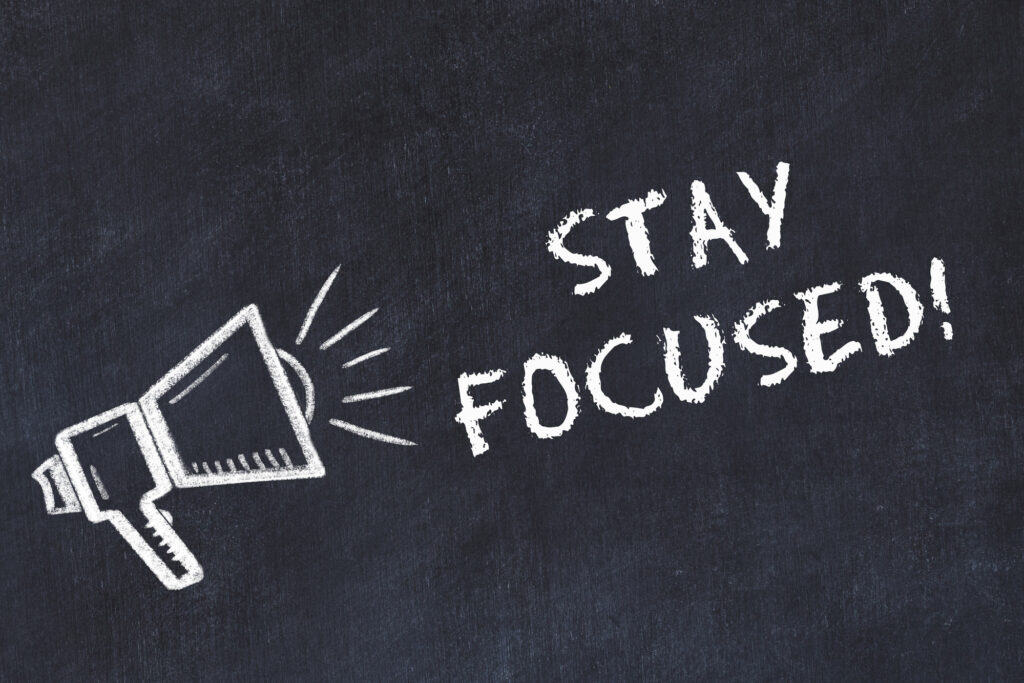
Does this sound familiar? You start to clean your house, and two hours later, you find yourself either viewing old photo albums or aimlessly scrolling through your phone. Well, you’re not alone!
These distractions can make cleaning feel like a never-ending task, but with a few simple techniques, you can stay on track and finish your cleaning efficiently:
- Clean in Manageable Chunks: Instead of trying to clean the entire house in one go, break down the task into smaller, more manageable parts. This could be cleaning one room at a time or even one corner of a room. This way, you’re less likely to feel overwhelmed, and you can actually see your progress as you go.
- Set a Timer: This technique ties into the concept of time management. Set a timer for a specific amount of time (say 30 minutes) and dedicate this time solely to cleaning. You’ll be amazed at how much you can get done when you’re working against the clock.
- Use Technology to Help: There are several apps available that can help keep you focused and productive. Consider using apps designed to minimize distractions by blocking access to certain websites or apps during your designated cleaning time.
Remember, the goal isn’t to achieve perfection but to create a clean and organized space where you can feel comfortable and relaxed.
Make Cleaning a Self-Care Routine
Often, we see cleaning as a mundane chore, but let’s flip that perspective a bit. Why not make cleaning part of your self-care routine? Just like yoga or a hot bath, cleaning can be a way to relax and unwind.
By turning cleaning into a self-care routine, you’re not just tidying up your space but also decluttering your mind.
For instance, as you wash your dishes, consider it as washing away your worries. You’re literally and metaphorically making room for positive vibes and productivity. So, the next time you pick up that broom or duster, remember you are doing something beneficial for your mental well-being too!
Final Thought
Living with ADHD doesn’t mean you’re destined to a life of disorganization and unfinished cleaning tasks – far from it!
By understanding the impact of ADHD on cleaning habits and implementing strategies tailored to your needs, you can create a more organized and peaceful environment.
While it’s important to acknowledge that there will be days when your ADHD symptoms may feel more pronounced, such as feeling overwhelmed or struggling with focus, don’t let these setbacks discourage you. Remember that managing ADHD is an ongoing process and that progress is made through small steps.
Use timers or alarms to keep yourself on track during each cleaning session. Celebrate small victories along the way as a way of boosting your motivation and sense of accomplishment.
Don’t be too hard on yourself if your home isn’t always pristine. Embrace imperfection and know that tidiness is not an all-or-nothing concept.
The goal is progress rather than perfection. Be proud of each step taken towards creating a cleaner space that suits your needs.
By implementing these strategies for cleaning when you have ADHD, you can create an environment that promotes focus and relaxation while minimizing stress and overwhelm.
Remember: every effort counts!







